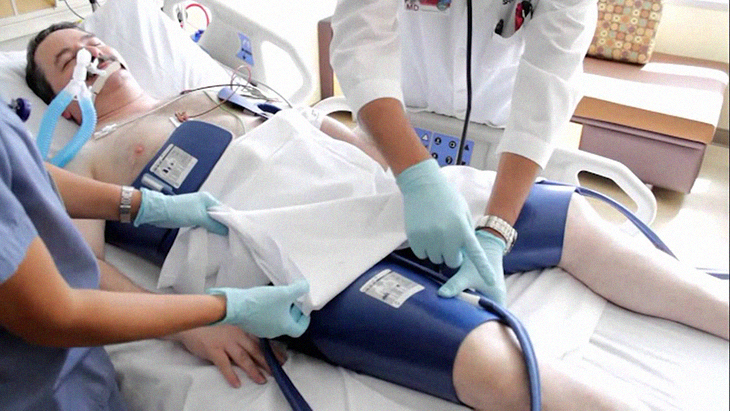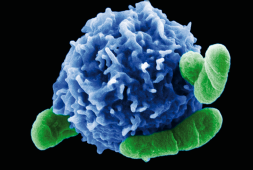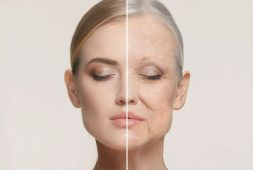
Health experts have been looking for ways to treat a variety of afflictions. Some have found perfect solutions that may somewhat be unconventional. The common man is oftentimes left flabbergasted by these methods. However, there are those that swear by it.
Research has been conducted on cold treatment. And while the history of medicine is ridden with stories of unusual and oftentimes downright dangerous “treatments,” these methods have also opened the doors for lifesaving discoveries. In a feature posted on Curiosities of Medical History, experts and researchers delve deeper at the unusual practice of exposing the body to cold temperatures for therapeutic purposes. The method is aptly called therapeutic hypothermia.
When you hear the word hypothermia, you immediately link it to death or danger. The word first appears to have emerged in English-language texts during the late 19th century. It comes from the ancient Greek word for hot or warm (thermos) and the Greek-derived prefix “hypo” has been added to it to mean under.
To date, the word hypothermia is considered to be a severe condition in which the body is unable to maintain its normal heat. As a result, the body temperature drops down to dangerous levels. A person afflicted with this can sometimes suffer heart failure, and it can eventually result to death if nothing is done. This is a dangerous medical condition. And while many have thought of this to be extremely threatening for centuries, there is also another side to its history.
Therapeutic hypothermia is a process but which the temperature of the body is cooled down. This form of medical practice has been around, in one form or another, since time immemorial. It has some benefits, which have been controversial at best. However, the method has also given rise to legitimate modern-day treatments.
The Complex History of Therapeutic Hypothermia
To understand more about the unorthodox history of therapeutic hypothermia and why it remains to be an appealing medical mode of treatment, researchers have spoken to Dr. Phil Jaekl, a neuroscientist and science writer, whose upcoming book, Out Cold: A Chilling Descent into the Macabre, Controversial, Lifesaving History of Hypothermia, discusses these topics more elaborately.
The Use of Cold in Ancient Medicine
It seems as if health experts have used therapeutic hypothermia for more than 5,000 years. The term was first mentioned in the Edwin Smith Papyrus. This is a medical treatise that outlines treatments for various injuries and ailments. In fact, historians looked into the text and say that this may date back to around 3,500 B.C.E.
Dr. Jaekl talked to Medical News today about this and said, “The earliest written records of using cold were discovered in ancient Egyptian texts. Some experts think these texts are the first recordings of medical teachings from Imhotep, a polymath and advisor to the pharaoh Zoser. They suggest using local cold applications to treat skin irritations, likely for [enslaved people] or in military situations.”
The papyrus was read and translated. It describes how “an abscess with prominent head on the breast,” can be treated with “cool applications.” In this case, ointments with cooling effects, made of ingredients such as fruit, mason’s mortar, and water, were applied.
According to the doctor, “[t]hese texts are significant because they are some of the first to advocate systematic medical procedures rather than incantations or prayers, which were common at that time.”
The Edwin Smith Papyrus may be considered ancient, but many think that this could be one of the first medical “textbooks” that presented case studies of physical ailments and indicated dedicated treatments they had used then. Some of the more popular forefathers of medical science also wrote about cold temperatures, the dangers that come with it, and the therapeutic potential. Jaekl noted, “The next big advancement for using cold therapeutically didn’t happen until over 1,000 years had passed, when cold was incorporated into the humorist system of medicine.”
The ancient system hypothesized how the human body had four “humors,” or liquids that circulated within. These humors need to be in balance. When found otherwise, the resulting outcome would be any number of diseases. In order to reclaim the person’s health, a physician would first need to diagnose and address the imbalance. These humors, once listed as black bile, yellow bile, phlegm, and blood, were either “hot” or “cold,” “wet” or “dry.” The imbalance would result in a number of corresponding afflictions. One such imbalance would result to a fever. This “hot” disease would need an exposure to the opposite element as a form of treatment.
Ancient Greek physician Hippocrates (c. 460–370 BCE) talked about the dangers of cold exposure for periods of time in his treatises. He had then said, “cold causes fits, tetanus, gangrene, and feverish shivering fits [and it] is bad for the bones, teeth, nerves, brain, and the spinal cord.” Still, he also recognized the therapeutic benefits of some cooling elements. In fact, the famous physician often prescribed snow and ice to stop bleeding. He also noted the importance of drinking cold water to bring down fever.
Galen (129–c. 210 CE), was also a man who was significantly influenced by Hippocrates’ teachings. He is credited with the invention of the cold cream. He not this for skin care. It later came to be used as a makeup remover for its cooling purposes in a medicinal context. His cold cream then could have used a specified blend of olive oil, water, and beeswax.
As Dr. Jaekl explained, “[The use of cold] was advocated by the pioneering Greek physicians Hippocrates and Galen to help balance bodily humors. In fact, Galen is known to have invented ‘cold cream,’ which is still popular today, although he advocated it for treating fever rather than as a moisturizer.”
The Emergence of Cold Bathing
There was a proliferation of the use of the cooling method in the 17th century as well. Physicians such as John Floyer (1649–1734) started experimenting more widely when it comes to using and cold water in treating ailments. In his treatise, An Enquiry into the Right Use and Abuses of the Hot, Cold, and Temperate Baths in England (1697), he lengthily wrote about how cold water baths were good for hygiene and health. He wrote, “In the hot air of summer, our bodies are of less strength; therefore in summer it is necessary to concenter our strength and spirits by cold bathing.” He also later added, “I do not persuade my reader to change those Errors of living, without having first done so myself; for by leaving off strong liquors, and all hot diet, teas, coffee, and etc. and by water-drinking, and bathing at Buxton [a historic spa town in England – Ed.], I have procured to myself better health, and more hardiness, than I have enjoyed for many years before.”
Floyer came up with the term, “cold regimen.” During this ancient time, Dr. Jaekl told MNT, “[b]esides simply using it to cool off, a big breakthrough for cold water was actually to use it for personal hygiene, like in Bath in England [another historical spa town – Ed.], for example, where people were, well, ‘bath-ing’.” He also noted, “Next, in the 18th century, it was used to treat fevers before it became popularized among the 19th-century European aristocracy as beneficial for aches and pains and general wellbeing. Around that time, spas became the in-thing.”
Scottish physician William Cullen (1710–1790) also promoted cold shower baths and even cold water enemas. These were, of course, for therapeutic purposes. The purposes came in a vast array of conditions. He argued how the cold can act as a sedative and a stimulant. This was beneficial to the blood flow of the body. He also pointed out how drinking cold water in moderation could help alleviate fevers. On the flipside, he also pointed out how some forms of cold exposure could cause fevers. Still, he suggested that cold bathing could prevent what he said to be “contagion.” He also said that this was “a flaccidity of the system” in young women “at a certain period of life.”
In the 19th century, Austrian Vincenz Priessnitz (1799–1851) started the trend of cold bathing when practicing alternative forms of medicine. He had a number of contemporary admirers, one of whom was Charles Schieferdecker. The latter described Priessnitz’s method of treating fevers as, “The patient laboring under this fever is put, […] whilst in the state of the utmost heat and the most raging paroxysm, into a bath as cold as possible, and left therein until he is cooled to the very chattering of the teeth.”
Cold Water Torture Used in Psychiatric Institutions
During the 19th and 20th centuries, on the other hand, “things got worse because [cold water] was used in ‘insane asylums’ to ‘treat’ people with psychiatric disorders, basically by subduing them,” Dr. Jaekl said. He further explained how, “Attempts to use cold water to treat people with mental health issues were consistent until the turn of the 20th century not because they actually had therapeutic or curative value but simply because they were a means of control.”
During this time, “surprise” cold showers or baths were believed to have been used to treat “raging excitement” and potent libido. Methods employed were dumping a bucket of cold water onto the naked “patient” or dunking them into icy baths.
In the 20th century, hot and cold showers had become common occurences in medical institutions. This involved wrapping patients in either hot or cold wet sheets. These were purported to have been used as a treatment of various mental illnesses. The methodologies were disturbing. In fact, some see these practices as akin to torture. According to one account from a nurse, cold wrapping took place in the following manner, “[The] blankets were in a big tub with a lot of ice […] you spread them out on the floor and it was […] like wrapping a baby. […] You would put the blanket down triangularly […], [a]nd sometimes you would use as many as two or three blankets because you wanted a heavy coat on the patient […] We pinned those so the patient couldn’t get out.”
Texts from the earlier centuries elaborate on how wraps were used not just to transfer the what they believed were therapeutic benefits of hot or cold water but as restraints that were “necessary evils of maintaining order, not […] remedies aimed at curing disease” as well. These forms of treatment continued for several decades. Nowadays, however, these are thought to be barbaric and traumatic for the patient. As Dr. Jaekl said, “Spraying cold water at people with a hose or having them sit under falling cold water was a terrible experience, and even the threat of it was used to influence the behavior of not only people with mental health issues but also prisoners and even women who weren’t ‘dutiful wives. It only fell out of favor when more effective — and humane — means, like pharmaceutical interventions, were developed.”
An Enduring Legacy
While the cold therapy treatments were inhumane, therapeutic hypothermia has been resurrected. It now has been legitimately used as a resuscitating method in critical care. Doctors employ methods to patients of cardiac arrest. It has become more sought-after as an alternative form of therapy. One example would be cold water swimming. This is believed to be beneficial to cardiovascular system health, insulin metabolism, pain reduction, and mental health. Stll, there are experts out there who speak against possible health risks such as hypothermia.
Dr. Jaekly explained, “Presently, cold water swimming is becoming repopularized for a number of medical benefits, if done carefully.” But according to him is that it is even more intriguing and also more controversial is cryotherapy. This is the practice of standing naked for 3 to 5 minutes in a tank of subzero temperatures. Some believe this to come with a myriad of benefits such as stimulating weight loss and reducing inflammation when it comes to preventing depression, dementia, and even cancer.
Dr. Jaekl himself lives in Scandinavia. While it is cold there, he questioned its benefits. Nonetheless, he also suggested that the practice can be appealing because of the excitement it comes with. He states, “Cryotherapy — sitting in a chill tank for a few minutes — seems like a trend that has yet to prove itself. People are curious. I’d be excited to try it out. Where I live, though, in the Norwegian arctic, daring people simply go for a dip in the ocean [is the ruling trend]! It’s a tradition, and I’ve heard it gets a lot easier the more you do it.”
Moving into the present day, Dr. Jaekl thinks that using cold therapy as a treatment straddles between the borders of science fiction and medical advancement. One example would be the practice of freezing the human brain at the moment of death. This is thought to preserve a person’s personality, knowledge, and essential self. While this is yet an ideology, this is one area of science that some scientists have been looking into and researching rigorously.
Dr. Jaekl said, “[T]here are way more intense forms of cryotherapy. Cryonics, for example. Humans are obsessed with immortality. Being cryopreserved involves more than being dumped in a vat of liquid nitrogen after death and then hoping for some distant future magic.” He also further stated how “cryonics is a very complex process, involving continuously evolving medical and technical advancements,” and suggests how “[d]evelopments in computing and nanotechnology, for example, give people […] a glimmer of hope in terms of being revived after being frozen and preserved.”



